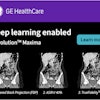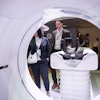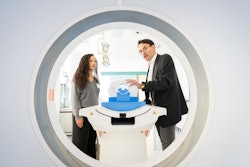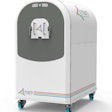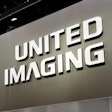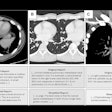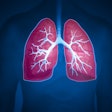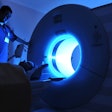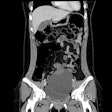There's a critical need to systematically debunk unfounded beliefs and misconceptions about radiology, and only by addressing these myths can inclusivity be promoted and patient and student engagement be enhanced, according to prize-winning research.
"Over the years, numerous false beliefs and myths have circulated about radiology, perpetuating misunderstandings," noted Dr. Kalina Plamenova Chupetlovska, research fellow at the Netherlands Cancer Institute (NKI). She is spending a year at the NKI under the mentorship of Prof. Regina Beets-Tan, PhD, former president of the European Society of Radiology, and one of her goals is to rectify misinformation that dissuades medical students from considering radiology as their preferred specialty and to alleviate patient concerns about imaging exams.
In an ECR 2024 poster that received a certificate of merit, Chupetlovska sought to challenge and rectify these 10 widely held misconceptions:
1. To become a radiologist, you need an extensive knowledge of physics.
"While a basic understanding of physics is certainly valuable, the emphasis is on developing strong clinical skills and the ability to interpret medical images accurately ... The radiologist's role is to interpret the images, translate diagnostic information, and provide actionable insights for the broader healthcare team. This nuanced task relies on clinical knowledge, effective communication skills, and the ability to identify, interpret, and report anomalies in the images. Don't let your fear of physics dissuade you from following your dreams!"
2. Radiologists have no patient interaction.
"If you are a misanthrope choosing radiology in the hope that you will just stay in a dark basement and never have to talk to people – think again! The misconception that radiologists work in isolation, detached from direct patient care, is not accurate. Radiologists who specialize in interventional radiology would have a similar amount of patient interaction as a surgeon."
3. Radiologists are not respected by their colleagues.
"The collaborative nature of modern medicine recognizes the pivotal role that radiologists play in ensuring accurate diagnoses and effective treatment planning. Radiologists actively collaborate with other healthcare professionals, contributing vital insights during multidisciplinary discussions that inform patient care decisions."
4. Radiologists are consistently exposed to hazardous levels of radiation.
"The use of protective measures, coupled with advanced imaging techniques, ensures the safety of radiologists while maintaining the diagnostic quality of medical imaging. The field has actively embraced innovations that prioritize minimizing radiation exposure without compromising patient and practitioner safety."
5. Radiology is primarily suited to men.
The outdated notion that radiology is predominantly suited to men is debunked by the increasing diversity within the profession ... The growing number of women pursuing successful careers in radiology reflects the evolving nature of the field and challenges stereotypes, emphasizing that talent and aptitude are not gender specific."
6. Radiologists only read x-rays.
"A lot of patients and non-medical professionals believe that radiologists spend their days only reading x-rays. However, the reality is that radiologists possess expertise in analyzing a broad spectrum of medical imaging studies. This comprehensive knowledge allows radiologists to provide nuanced and thorough diagnostic assessments across various imaging modalities, showcasing the diversity and complexity of their role."
7. All radiology tests involve radiation exposure.
"While many radiological tests do utilize ionizing radiation, it is inaccurate to assume that all modalities involve exposure to such radiation. This diverse array of imaging options empowers healthcare professionals to select the most appropriate and safest modality."
8. Radiology reports become instantly available after the exam.
"Contrary to the misbelief held by many patients (and the demands of many surgeons) radiology reports are not instantly generated - the process involves a meticulous analysis and interpretation by the radiologist. Accuracy is more important than speed when it comes to clinical decisions."
9. All diseases and conditions can be detected by radiology exams.
"Not all diseases and conditions are detectable through imaging alone. Radiological findings are most effective when integrated with clinical information, patient history, and other diagnostic methods. Radiology serves as a valuable adjunct to comprehensive patient care rather than a standalone solution, emphasizing the importance of a holistic approach to medical diagnosis and treatment."
10. Radiology is easy.
"Dismissing the notion that radiology is an easy field is crucial, given the rigorous training and intellectual demands it entails. The complexity of cases, the continuous evolution of technology, and the critical decision-making involved make radiology a challenging and intellectually stimulating specialty, requiring ongoing commitment to professional growth and excellence."
Bonus myth: Radiology is boring.
"Challenging the perception that radiology is monotonous is essential to highlight the dynamic and intellectually engaging nature of the field ... As a radiologist, you will get to see a variety of patients and diagnose a wide variety of conditions -- urgent, chronic, infectious, hereditary, oncologic, etc. This dynamic environment keeps radiologists engaged and invested in the pursuit of excellence and improved patient outcomes, making radiology an exciting and evolving field in the landscape of modern medicine," Chupetlovska concluded.


